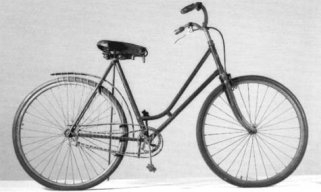ca. 1898 Orient Ladies Safety

Description
For decades, the bicycle world was essentially a “no girls allowed” club. Very few American women rode because it was against the culture at the time. Societal norms were far stricter and more gendered than they are today. As long as society required women to wear long dresses, bicycles were difficult, if not deadly, for most women to ride. Floor-length dresses would always get tangled in the moving wheels. The few women who dared ride in breeches were…
For decades, the bicycle world was essentially a “no girls allowed” club. Very few American women rode because it was against the culture at the time. Societal norms were far stricter and more gendered than they are today. As long as society required women to wear long dresses, bicycles were difficult, if not deadly, for most women to ride. Floor-length dresses would always get tangled in the moving wheels. The few women who dared ride in breeches were usually performers with circuses or travelling acrobatic troupes.
The actual bicycle design barrier for women disappeared in 1888 when manufacturers introduced a drop-frame that lowered the top bar connecting the front fork to the seat. Now there was enough room for a woman wearing a long skirt to sit on a bicycle without restrictions. Since a woman’s vigorous pedaling could still send skirts flying up in the wind, some women cyclists put weights in their hems or lined the skirts with leather to keep decent while riding.
